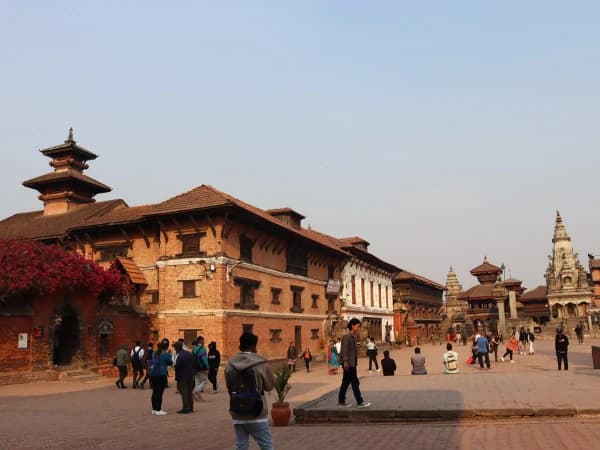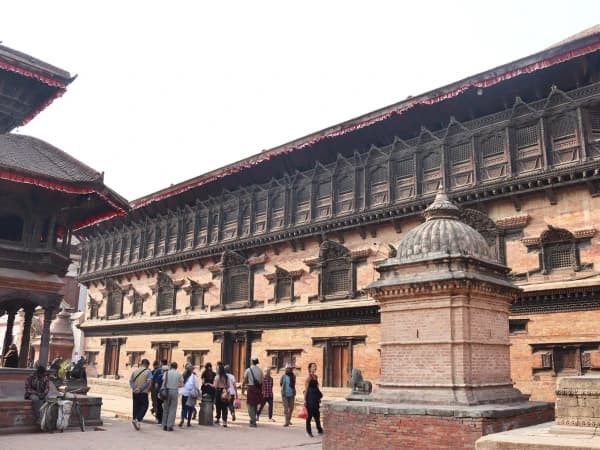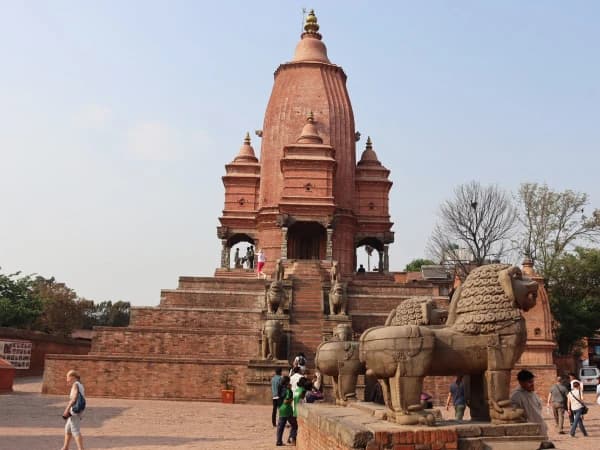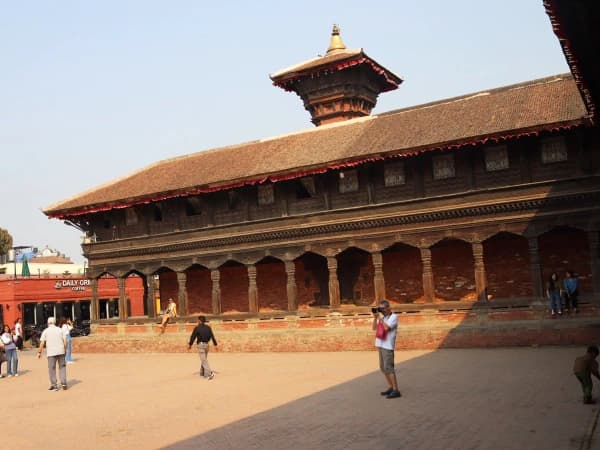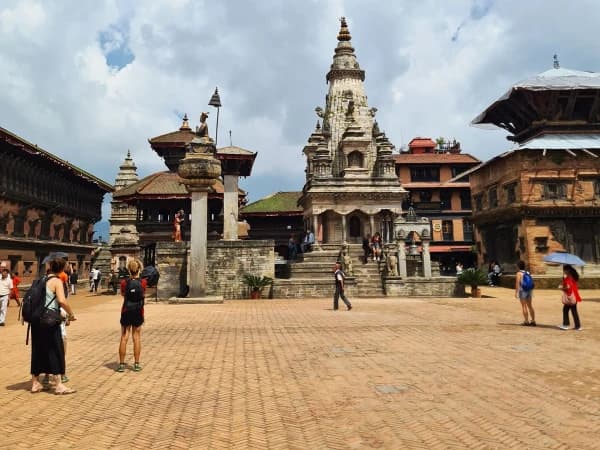Bhaktapur Durbar Square is an important cornerstone of Kathmandu Valley Civilization. It embodies the intrinsic philosophy of human life, which begins and ends with its profound values of the original Newa culture, is famous for. It is revered as the land of devotees. The antiquity of Bhaktapur surpasses the Valley Civilization, as evidenced by different scholars. People are friendly and laborious. The square is a nexus for various Newa traditions and religious sects rooted in the region. It was recognized as a UNESCO World Heritage Site in 1979. The palace square stands in Bhaktapur district, Nepal, near about 8 KM from Tribhuvan International Airport.
Monuments
Areas that embody cultural, historical, and civilizational significance within a cultural setting are monumental zones of Bhaktapur. The integration of historical, tangible, and intangible arts, culture, and languages within cultural values defines these monuments. The grand monumental zone of Bhaktapur exemplifies the synthesis of devotion and preservation of history. To fully grasp the essence of the Bhaktapur civilization, one must explore the various sacred monuments in this location.
The palace with fifty-five windows, Vatsala Temple, Nyatapola Temple, Bhairavnath Temple, Goladen Gate (Sundhoka), Taleju, Dattaraya, Pujari Math, Siddhapokhari, Bhaktapur Museum, Chyamashinha, Wakupati Narayan, and many more are significantly important. These monuments collectively represent the profound cultural and spiritual heritage of Bhaktapur. Some of the most significant monuments in this sacred area are listed below:
Palace with Fifty-Five Windows
The most amazing and significant place to visit in Bhaktapur is the surroundings of the palace with 55 windows. It was built during the reign of King Bhupatindra Malla (1696–1722). This palace is one of the most iconic structures in Bhaktapur Durbar Square. It served as the royal residence until 1769, when King Prithvi Narayan Shah conquered the valley. The palace is known for its elaborately carved wooden windows and doors. The wooden arts of the palace are spectacular.
Vatsala Temple
This Shikhara-style temple, close to the palace, dedicated to Goddess Vatsala-Durga, was originally built by King Jitamitra Malla, a Maithil Poet King, Father of King Bhupatendra Malla. In 1674, he constructed a Shikara-style Shiva temple adorned with gilded masks on each side. By 1682, he had built the two-story Dharmasala Palace near Durbar Square, featuring a golden Mahadeva. It was famous for its massive bronze bell, which was used for public announcements in those historical times.
Nyatapola Temple
This is a five-tiered pagoda-style temple dedicated to Goddess Siddhi Lakshmi, built by King Bhupatindra Malla in 1702. It is the tallest, tower-like historical temple in Nepal and has survived several earthquakes due to its strong construction. The temple is decorated with a series of stone sculptures of mythical figures and animals. The monuments are must must-visit once in a lifetime.
Bhairavnath Temple
The temple was originally built in the 17th century and later expanded by King Bhupatindra Malla. The three-story temple is dedicated to Lord Bhairav, the fierce manifestation of Lord Shiva. The temple showcases intricate woodwork and is an important site for cultural and religious ceremonies. The Bhairavnath temple was built in to maintain and balance the Tantric energy of Shiddhilaxmi – goddess inside the Nyatapola temple.
Golden Gate (Sundhoka)
The Golden Gate is the entrance to the Palace of 55 windows and is regarded as one of the most exquisite gates in Nepal. It was built by King Ranjit Malla in the 18th century, in 1753. The gate is decorated with Hindu deities, including Goddess Taleju, as it is the land of Devotees. The door is very attractive and historical.
Taleju Temple
This temple is dedicated to Goddess Taleju Bhawani, the royal deity of the Malla kings. The temple was built by King Mahendra Malla in Kathmandu and by Queen Devallaxmi Devi in Bhaktapur in 14th century. It is not open to the general public except during the annual Dashain festival. The temple complex contains beautifully crafted metal and woodwork. It is a temple of titular Goddess of Malla dynasty.
Dattatreya Temple
The temple is located in Dattatreya Square (just outside the main Durbar Square area, Bhaktapur), this temple was originally built in 1427 by King Yaksha Malla. It is dedicated to the Hindu trinity (Brahma, Vishnu, and Shiva symbol of Generation, Operation and Destruction). The temple is made entirely of wood, and legends say it was built from a single tree. The temple is awesome and iconic.
Pujari Math
Pujari Math is historical structure near Dattatreya Temple serves as a museum and was once a priest’s residence. It features one of Nepal’s finest wooden carvings, the famous Peacock Window. While visiting Dattatraya square visitors must visit Pujari Matha and the unique peacock window.
Siddha Pokhari
This large rectangular pond was built during the reign of King Yaksha Malla in the 15th century. It holds cultural and religious significance, and locals often visit for rituals and fish feeding at the entrance of Bhaktapur. It is a wonderful pond and a source of water for the city in historical times.
Bhaktapur National Art Museum
The museum is located within the Bhaktapur Durbar Square premises, This museum houses an extensive collection of ancient Hindu and Buddhist artifacts, including statues, paintings, and manuscripts. It provides insight into the artistic and religious history of Bhaktapur.
Final Words
Bhaktapur is a revered Hindu shrine located on the banks of the Hanumante River, dedicated to Lord Hanuman. It is one of the holiest UNESCO World Heritage Sites in Nepal. It serves as a hub for tourists who love and are curious about cultural architecture and history. For anyone visiting Nepal, Bhaktapur is a must-see destination, offering profound history and cultural monuments.
